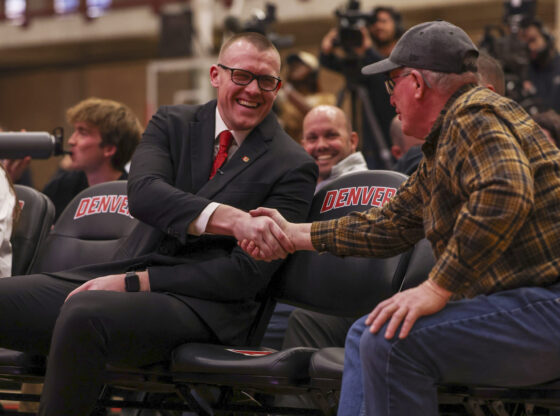Rud Platt, doctoral candidate with the University of Colorado’s Geography Department, presented his research on wildfires to students and faculty last week.
With over four million acres burned in Colorado in 2003, his research comes at an opportune and helpful time. Platt explained that “our biggest fires come after the El Nino years, [which] are followed by a period of drought.”
His presentation, entitled “Modeling Wildfire Mitigation and Ecological Restoration on the Urban Wildlife Interface,” focused on the Montane Zone of Boulder County. This area provided a variety of land uses, both private and public.
His research falls within the context of the recent increase in wildfires due to the expansion of exurban development. And possible “unnatural” fuels, built up due to fire exclusion. Basically, people are moving into undeveloped rural areas.
In effect, they allow fewer natural fires, which would have released fuel build-up like sticks and brush. This leads to larger wildfires in the future, which feed on this unreleased fuel.
Platt went on to explain that recent Fire Policy Proposals, like the National Fire Plan of 2000 and the Healthy Forest Restoration Act of 2003, seek to both reduce risk of fire through wildfire mitigation and restore the natural ecological states of hazardous areas. The latest solution has been mechanical thinning, which ideally accomplishes both goals.
Platt’s research involves taking various topographical maps, useful for determining possible danger areas, and digitally placing them on top of maps that show where mechanical thinning could help, to determine the effectiveness of the future thinning.
Through this computer program, he has assessed that in the region he researched both goals could be accomplished, “but on only 20 percent of the landscape.”
He argued that a lot of money was given to the forest service for mechanical thinning, but these areas are rarely within the parameters of accomplishing both goals.
Platt said, “My research points to an oversimplification in ways people explain fire policy.” He continued to say that policymakers should make sure the public knows that “there is no panacea, no overriding solution.
“They need to be clearer about the primary goals of the policy, state the areas they have researched, and mention the constraints due to land use.”
When asked how he would improve policies he said, “I would direct a lot of efforts toward areas where you could accomplish both wildfire mitigation and ecological restoration.”












